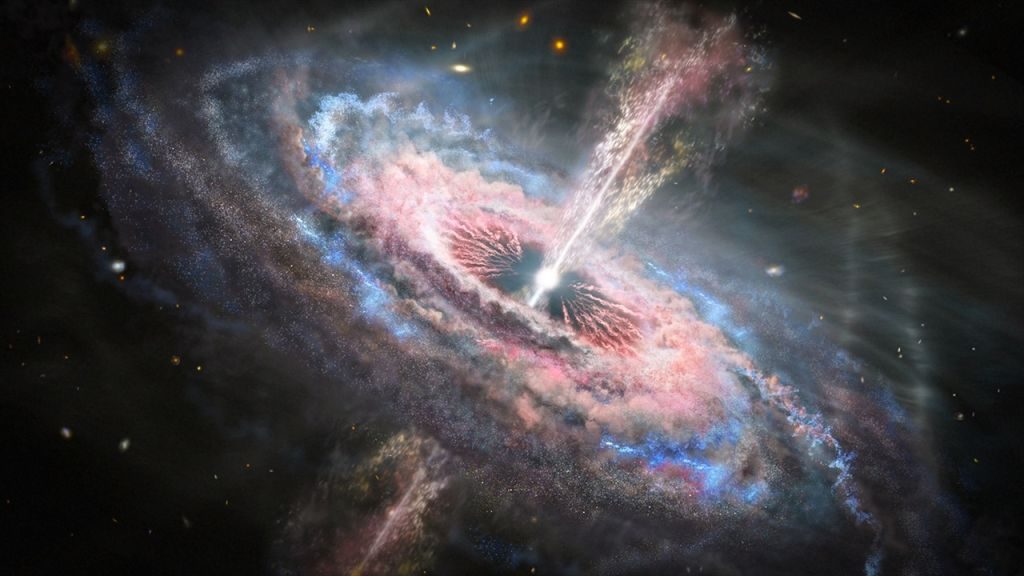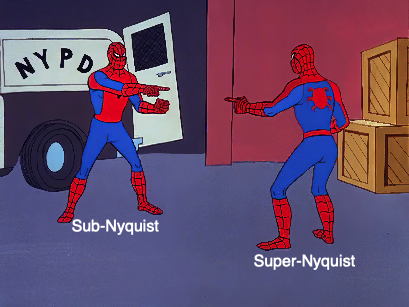Roughly half of the coursework in Pre-MAP will be spent working on a research project in a very small group with mentors from the Astronomy Department, such as graduate students, postdoctoral fellows, or faculty advisors. The research projects typically advance the research goals of your mentor, and so the projects that we offer cover a variety of topics and size-scales from stars to galaxies.
Students can select their top three project choices, and we will sort you into groups among your top choices. Read about the projects below, and follow the links to learn about your potential advisors.
Title: Mapping the Cosmic Baryon Cycle with Quasar Spectroscopy
Mentors: Jessica Werk, Kirill Tchernyshyov, Matt Wilde
Students: Alexandre Ramirez, Caleb Wilkins
Skills: Jupyter notebooks, astropy, and other python-based modules.

Most of the atomic matter in the Universe courses through the dark, vast spaces between galaxies. This diffuse gas cycles into and out of galaxies multiple times. It will form new stars and planets and become swept up in violent stellar end-of-life processes. Thus, the so-called cosmic baryon cycle holds the key to understanding galaxy evolution and our own cosmic origins.
Unfortunately, we cannot observe this gas directly by its own emission; instead we study it with a technique called Quasar Absorption Line Spectroscopy. In this method, the Quasars serve as bright background sources whose light passes through foreground intergalactic filaments and gaseous galaxy halos. The resulting absorption signatures seen in their spectra can be identified as ionized atomic transitions from Carbon, Nitrogen, Oxygen and other “heavy” elements at different redshifts that correspond to the distances of such gaseous features along the line of sight to the Quasar.
Prof. Jessica Werk, Dr. Kirill Tchernyshyov, and UW graduate student Matt Wilde are conducting a large survey with the goal of understanding how this diffuse gas correlates with galaxy properties. Essentially, this work requires counting atoms in intergalactic space. To do so, we must carefully identify and classify all of the absorption features seen along high-resolution Quasar spectra taken with the Cosmic Origins Spectrograph (COS) on the Hubble Space Telescope (HST). We will analyze these spectra using Python tools in a graphical user interface which will enable us to identify the redshifts and measure the strengths and properties of absorption lines from ionized elements present in the gas. By mapping the redshift distribution of many so-called `absorption line systems’, we will ultimately constrain the very elusive cosmic baryon cycle that gave rise to the visible structures in the universe.
Title: Boiling Bubbles on The Largest Stars
Mentor: Trevor Dorn-Wallenstein, Emily Levesque, Jim Davenport
Students: Ishan Coutinho, Bilal Smith
Skills: Jupyter Lab, numpy, pandas, astropy

Red supergiants are massive stars in the final stages of their evolution before they dramatically explode as supernovae. They exhibit dramatic variability due to convective motions (aka boiling) and the production of dust (aka starstuff) causing their brightnesses to vary at levels observable to the naked eye, as recently seen in the red supergiant Betelgeuse’s newsworthy Great Dimming this Winter. The timescale and amplitude of this variability is highly sensitive both to the physical conditions of the red supergiant’s outer layers, but also to the amount of mass throughout the star. We will use data taken by the American Association of Variable Star Observers to characterize the variability of a sample of famous red supergiants, and compare our results with predictions from cutting edge models.
Title: Determining the Distance to Three Quasars Lurking behind the Andromeda and Triangulum Galaxies
Mentor: Kathryn Neugent
Students: Faith Eades, Kukuiokalani Ulii
Skills: python, numpy, matplotlib, astropy, ds9 (optional)

Quasars (QSOs) are incredibly energetic cores of ancient galaxies that are powered by supermassive black holes. I serendipitously stumbled upon three distant QSOs while searching for massive stars in the disks of the Andromeda and Triangulum galaxies (M31 and M33, respectively) and obtained their spectra. Two of these are known while one is a brand new discovery! For this project, we’ll characterize the three QSOs by looking at their spectra, identifying the most prominent emission lines, and determining their redshifts. By calculating the redshift, we’ll be able to figure out the distance to these objects. The most distant quasar known has a redshift of z = 7.54 putting it at a distance of almost 30 billion light years! How far away from us will these three be?
Title: Using Spacecraft Motion to Identify Signal Imposters in TESS Data
Mentor: Keaton Bell
Students: Ethan Bouvet
Skills: Python, Jupyter notebooks, numpy

The Transiting Exoplanet Survey Satellite (TESS) records movies of stars with a regular frame rate. These are great data for studying stars that vary in brightness with time, but regular data sampling can cause the wrong timescales to be measured because of the wagon-wheel effect (see Wikipedia). However, a slight deviation from exact regular sampling is introduced by the orbital motion of the TESS spacecraft, which in some cases can be used to identify the correct signal from a set of so-called “Nyquist” imposters. We will use a combination of real TESS data and simulated data to determine when this effect is significant enough to reliably identify the correct signals of variability.
Title: Searching for Spiders
Mentor: Eric Bellm, Rebecca Phillipson
Students: Simon Dawson, AuDuyen Trinh
Skills: basic python programming

“Black widow” pulsars are unusual binary systems in which a millisecond pulsar irradiates a low-mass companion in a tight orbit of just a few hours. The extreme nature of these systems creates dramatic changes in brightness throughout the orbit. In this project you will use optical variability data from a time-domain sky survey, the Zwicky Transient Facility, to search for new black widow systems in our Galaxy.
Title: Characterizing the Potential Histories of TOI-700d
Mentor: Rudy Garcia
Students: Jessica Jelke, Valerie Saylor
Skills: Python and UNIX terminal

TOI-700d is a recently discovered exoplanet that lies within its star’s habitable zone, meaning that liquid water may be stable on this planet. Whether it is actually habitable or not depends on a variety of factors including how the planet has changed over time. In this project you’ll use modeling software to identify the different ways that TOI-700d may have evolved and see to what extent the planet could be habitable.
Title: Building Planets from the Inside Out
Mentor: Spencer Wallace
Students: Natasha Ciboulet, Dawn Gernsheimer
Skills: Basic Unix commands, Jupyter notebooks, Basic Python, numpy, matplotlib, astropy units, pynbody

The Kepler space telescope has revealed many systems of closely-packed terrestrial planets that orbit very close to their host stars. This is a surprising result, which has forced astronomers to rethink their theories of how planets actually form. In order to build multiple planets so close to the star, the planet-forming material (mostly in the form of dust and pebbles) needs to somehow move inward and pile up at the inner edge of the disk. There are a number of mechanisms to explain this, but the consequences of such a significant pileup of material has not yet been examined in much detail. For this project, you will analyze a set of N-body simulations run on UW’s own Hyak supercomputer, meant to model the growth of planetesimals (km-sized bodies) into planetary embryos (moon-sized bodies) near a pileup of material near the host star. Properties such as the size and orbital distribution of the resulting bodies can then be used to figure out how all of this material might have gotten there in the first place, along with placing some constraints on what the resulting planets that form should look like.
Title: Simulating Transiting Exoplanet Systems
Mentor: Zachary Langford
Students: Kyle Jordan, Grace Moya-Ranallo
Skills: Basic Unix and Python; Julia (will be taught!)

We can learn a great deal about exoplanet systems simply by watching their host star(s) dim. This dimming is known as a transit. By measuring different features like the duration, depth, and times of each transit, we can place constraints on the planet’s orbit. When more than one planet is present we may see multiple transits, or variations in transit times. The goal of this project is to use N-body simulations, along with a transit model, to characterize multi-planet systems in the Kepler catalogue.
